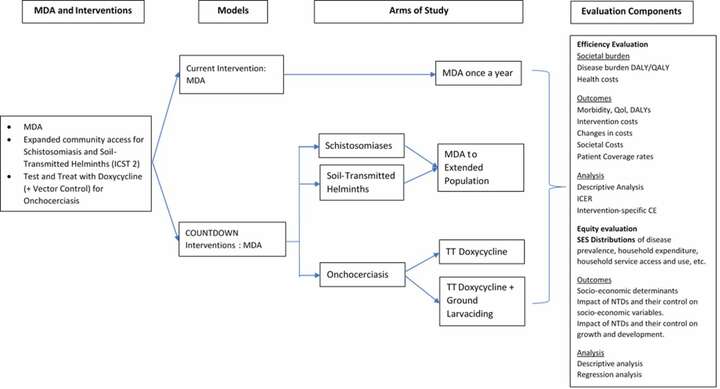
By Maame Esi Woode, Jahangir A.M. Khan, Rachael Thomson, Louis Wilhelmus Niessen, the COUNTDOWN Consortium
The main objectives of the COUNTDOWN project are to study the most effective, cost-effective, sustainable and acceptable current and complementary strategies to implement scaled-up NTD treatments in Ghana, Cameroon, Liberia and Nigeria. This should lead to meeting the 2020 London Declaration goals and strengthen in-country health systems. This present study aims to identify generalisable factors which influence the acceptance, effectiveness, efficiency and equity impact of scale-up from a health systems approach. It also explores the most effective strategies to work with community drug distributors (CDDs) and community health workers (CHWs) to extend the scaling up of MDA to include hard-to-reach communities and build the resilience of vulnerable and marginalised groups.
The health economics component of the project has three main substudies. Substudy 1 aims to analyse the economic burden of NTDs at the household level by means of household surveys, at baseline and (selective) postimplementation of NTD efforts. Substudy 2 aims to study the value for money of the investment in COUNTDOWN interventions from a societal perspective. These interventions include expanded community treatment of SCH and STH in Ghana and Cameroon and a treatment of OV with doxycycline (and ground larviciding) in Cameroon.
The study has acknowledges the limitations presented by the time factor. To fully observe the poverty impact of NTDs and the role MDAs play, a longer period of study will be appropriate, preferably beyond 2 years. This limits the ability to fully appreciate the impact of the different interventions on several socioeconomic variables such as education, labour market participation, incomes and adulthood outcomes. This is, however, a first step in the right direction.
